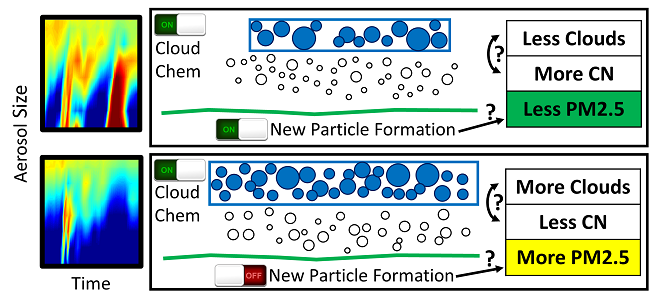
Presentations and Publications
Dong, C., Matsui, H., Spak, S., Kalafut-Pettibone, A., Stanier., C.O. Impacts of new particle formation on short-term meteorology and air quality as determined by NPF-explicit WRF-Chem in the Midwestern United States, Aerosol and Air Quality Research (AAQR), doi:10.4209/aaqr.2018.05.0163, 2018.

New particle formation (NPF) from nucleation and subsequent nuclei growth, which is frequently observed in the troposphere, is critical to aerosol-cloud interactions yet difficult to simulate. In this work, regional simulations with the fully coupled NPF-explicit WRF-Chem model link NPF to cloud properties and to changes in both meteorology and air quality in the U.S. Midwest during summer 2008. Simulations that include NPF have higher concentrations of condensation nuclei, as anticipated from the particle production associated with nucleation, leading to enhanced concentrations of cloud condensation nuclei (CCN) at high supersaturations. However, the online-coupled model develops a number of unexpected features that can be traced to a feedback loop involving aqueous (in-cloud) oxidation of sulfur combined with boundary layer NPF. Simulations with NPF (relative to simulations without) exhibit reduced PM2.5 sulfate mass, cloud dimming (reductions in the cloud frequency, CCN concentration at a low supersaturation, cloud optical depth, and cloud droplet number concentration), and enhanced surface-reaching shortwave radiation. This effect of NPF on the PM2.5 mass is mostly absent for other constituents of PM2.5. The implications of this feedback loop, which is not considered in most climate and air quality modeling, are discussed.